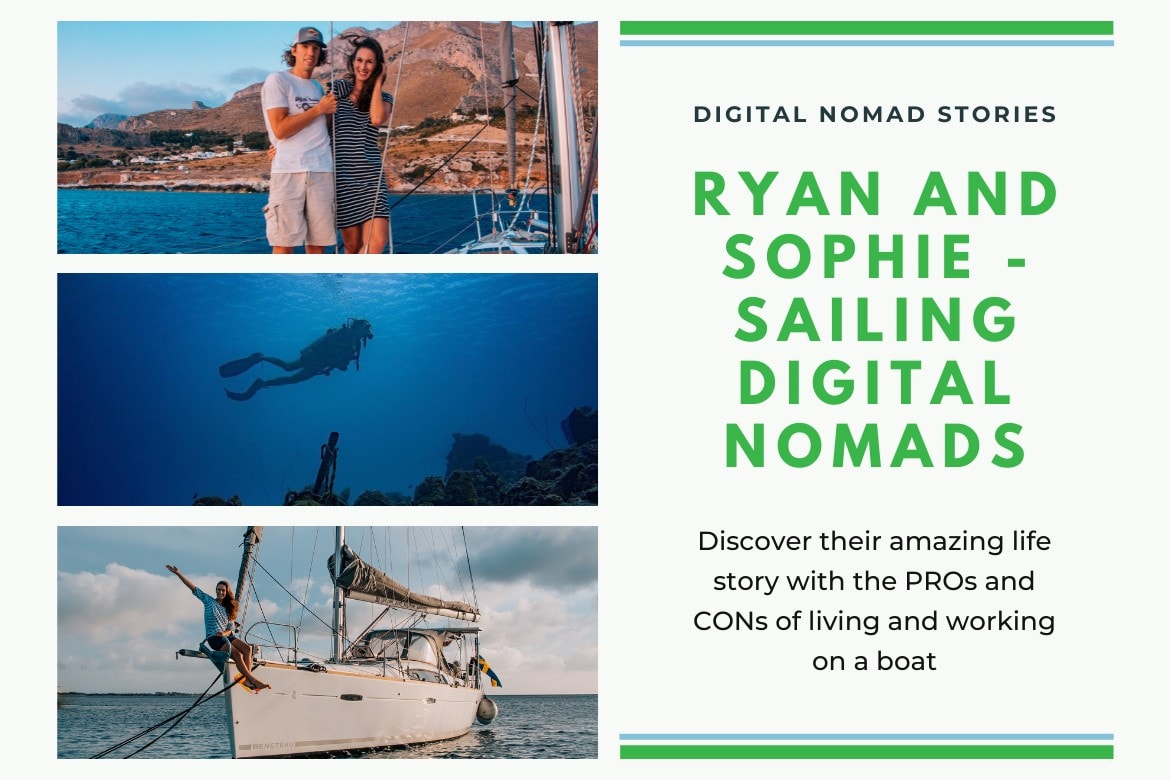According to a study published on Vox.com, by 2025, an estimated 70% of the workforce will be working remotely at least five days a month. While 2020 may be considered the year of remote work, it is just the beginning as we see the trend continuing in 2021 and will probably continue after this point too.
Digital nomads have always had a thing for finding the most remote and beautiful places to work from, but some of them have taken it to the next level. Did you know there are digital nomads that actually make their living by working from a boat (on and off it’s true) whilst sailing the world?
We talked to one of the most popular sailing digital nomads on Youtube, Ryan and Sophie and they told us how life on a boat truly is when travelling the world. As you’ll find out below, even though it looks idyllic on camera, there are many challenges as well when living the dream on a boat.
Ryan and I had no clue about boats or sailing back in 2015, when we first considered pursuing a life of adventures at sea. At that time, we were sitting in the open plan office of our respective corporate jobs and daydreaming our lives away.
We imagined ourselves laying under the sun in a hammock, on the foredeck of a beautiful sailboat anchored in crystal clear blue water by a paradisiac island, a book in one hand and a cocktail in the other. Life on a boat sounded carefree, worry-less and relaxing.
*Insert disc scratch*. Fast forward to 2016 when we bought our boat, Polar Seal, in the spring of 2016, and quickly realized how wrong we were. We have now been sailing the World for a little over three years, and while we have -on occasion, been laying in a hammock, cocktail in hand, the full picture is a lot less glamorous than it looks.
So if you are reading this from the cubicle of your corporate job, daydreaming your life away, here are some pro and cons of the sailing life as we know it now:
Ryan and Sophie – Sailing Digital Nomads
Pro #1: We are free to live our lives the way we want.
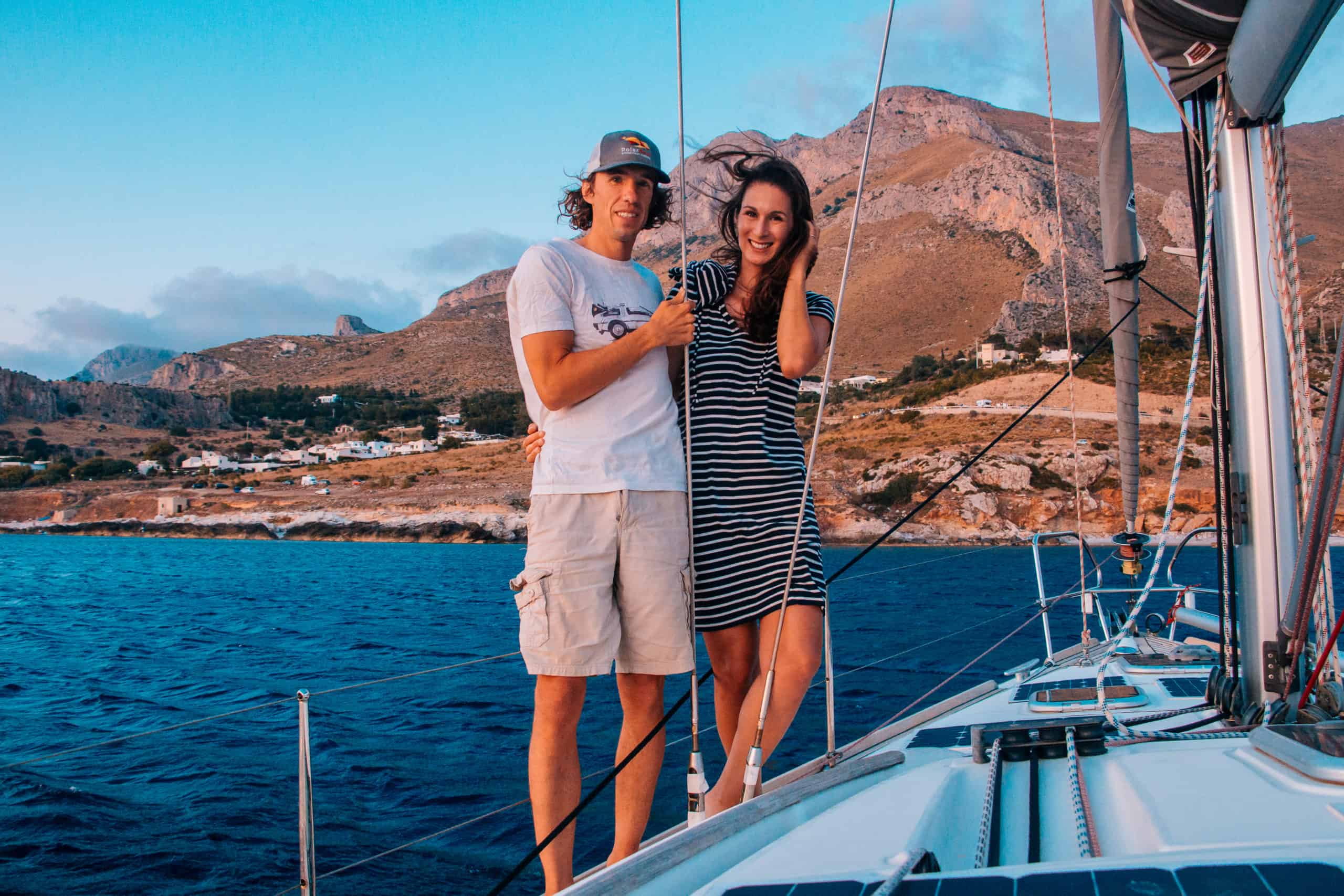
Being self-employed as digital nomads from our boat comes with a lot of freedom when it comes to how we can organize our lives, and that is certainly a very strong pro!
As corporate workers in Europe, we had 5 weeks of vacation per year, and we organized our lives around our full-time jobs and our five annual weeks of freedom. Our social lives, workout schedule, travel ambitions and plans for the future all depended on how work would look like on a given day, and while we were used to it, it felt very limiting.
Now that we work for ourselves from the boat, we get to decide (mostly) where in the World we will be, when, and how we spend our time there. We dress the way we want, we create our own work expectations, set our own objectives, and decide ourselves when we get time off-work. Apart from when we need to depart early in the morning, we do not set an alarm clock to wake up anymore, and I would not have it any other way again!
This level of freedom did not exist in our former lives as corporate employees, and we cherish every second of it.
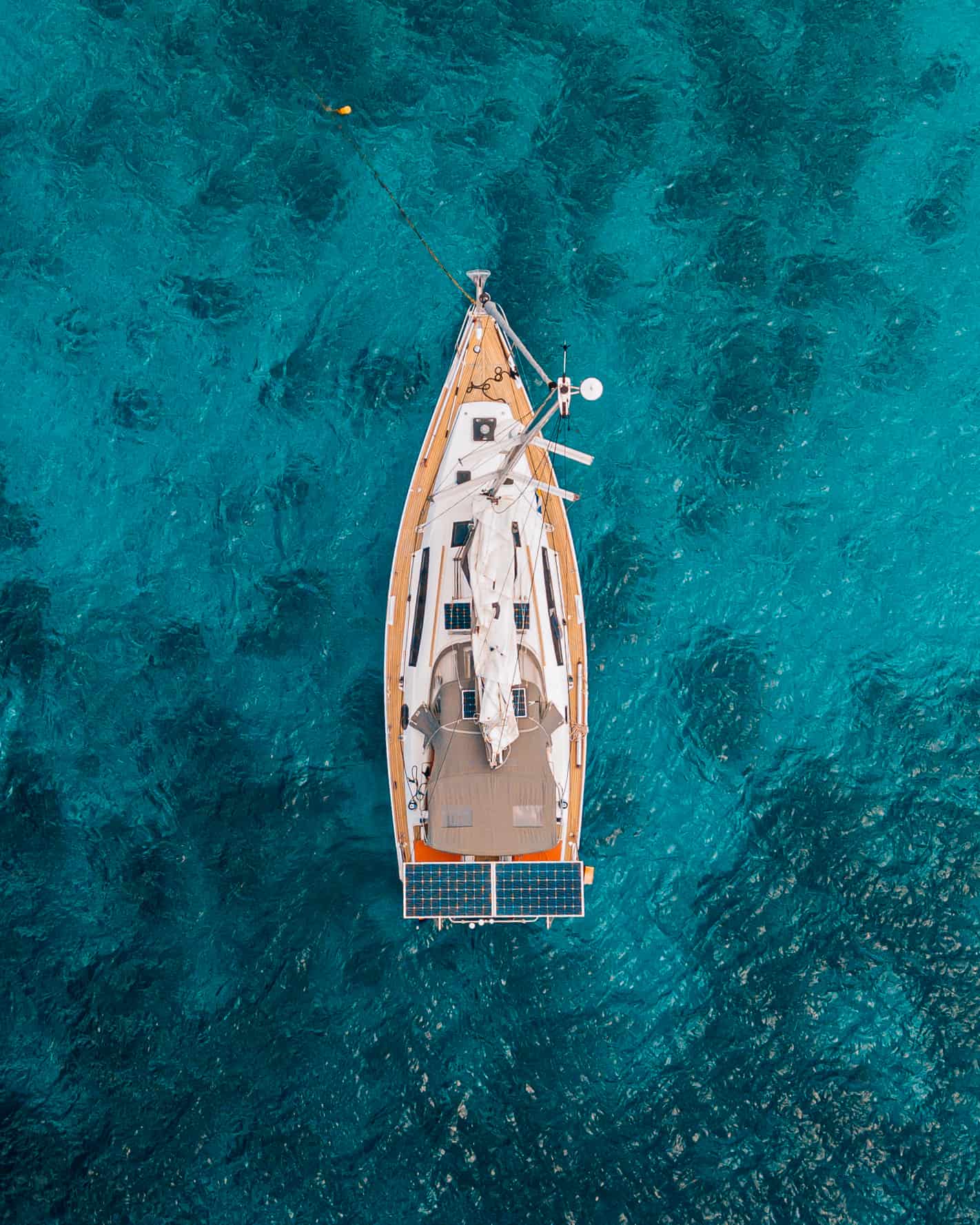
Ryan and Sophie – Sailing Digital Nomads
Pro #2: We have seen more of the world than most people ever will in their lifetime (and we're not done yet)
In the three years that we have sailed the World, we have gone from Sweden down and throughout the Mediterranean and across the Atlantic Ocean to the Caribbean. We have then sailed around the Caribbean for a year, and sailed back across the Atlantic to the Azores via Bermuda. That is so far 13000 nautical miles, 14 countries, well over 20 islands, and many many more cities, harbors or anchorages.
We estimate that, had we relied on the vacation time we were getting as full-time corporate workers, it would have taken well over 10 years to visit all the regions of the World we’ve been to on our sailboat. Besides, some of the places that we have visited would be difficult to access by regular airplane travel, and it gives us a much more genuine experience than what is normally offered in very touristy places.
We feel incredibly privileged to experience so much of the world in such a short time, all from the comfort of our own floating house.
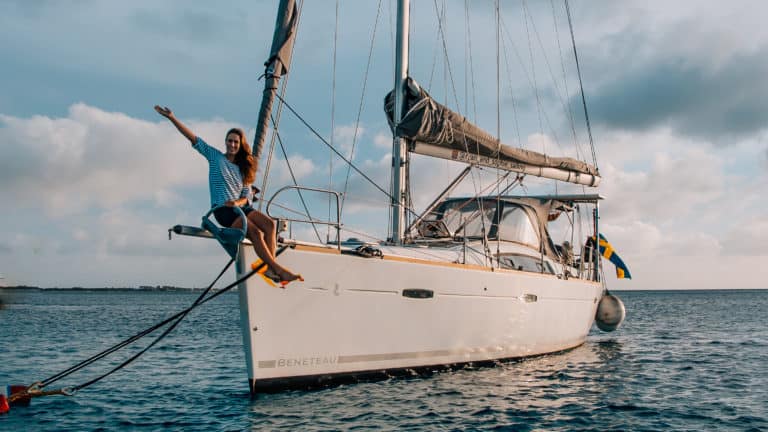

Ryan and Sophie – Sailing Digital Nomads
Pro #3: We make incredible friends from all over the World
Living and traveling on a sailboat can sound like a lonely activity when you imagine that you’ll have to leave behind your friends and family to go on a sailing voyage, but it is everything but.
Once at sea, there is a tight-knit community of like-minded sailing cruisers awaiting to meet you and hang out everywhere you go. In most cities, harbors or anchorages, there will be sailors eager to help out with information, tips and share their knowledge around a drink or two.
We have met new friends everywhere we’ve been, from all over the world and from all kinds of socio-economics backgrounds, and we have created much deeper connections a lot faster than we would have on land. After three years, we have friends literally all over the World and it isn’t rare for us to meet the same people in completely different corners of the planet!

But all these good things do not come without a price, and there are certainly some solid cons to consider if you are thinking about taking the plunge and moving onboard a boat to travel the world, so here comes the reality check!
The CONS
Ryan and Sophie – Sailing Digital Nomads
Con #1: Planning is all down to weather (and it's not always good)
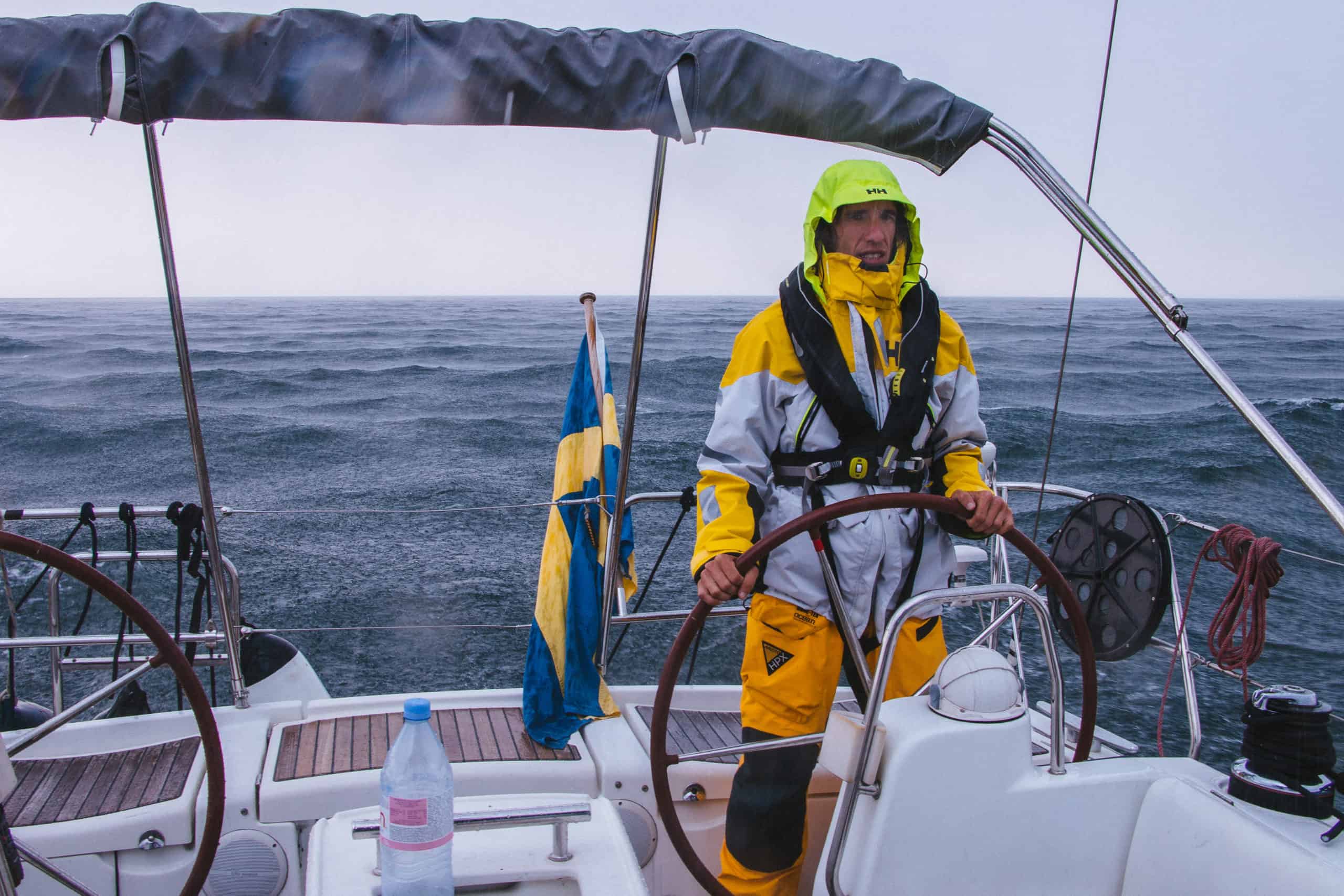
While we love the fact that we can plan our lives almost as we want, ultimately, Mother Nature is in charge of our schedule. Going somewhere is never granted, and we need to be extremely flexible with our plans.
If the winds decide to stop, so do we. If storms are coming, we need to either stay in place, or move to a different spot where we have better protection. This means that sometimes we end up spending weeks in places we do not like a lot, or that we miss places that we really wanted to visit.
But the hardest part of it is that our work schedule can also be severely impacted by weather. If we get bad weather where we are anchored, the swell or strong winds can make our boat swing and roll, and it becomes impossible to sit at a computer.
One day, Ryan and I had a Zoom call with a lawyer, and the swell in the anchorage made our boat roll so much that we had to take a break on shore because we were both getting seasick. By the time we needed to return onboard for our call, the situation had worsened and even coming back to the boat was difficult. Postponing the meeting was impossible, so we hopped in our dinghy (the little boat that takes us from Polar Seal to shore and back) and were absolutely drenched and nauseous as we talked to our lawyer, who was comfortably sitting in his office.
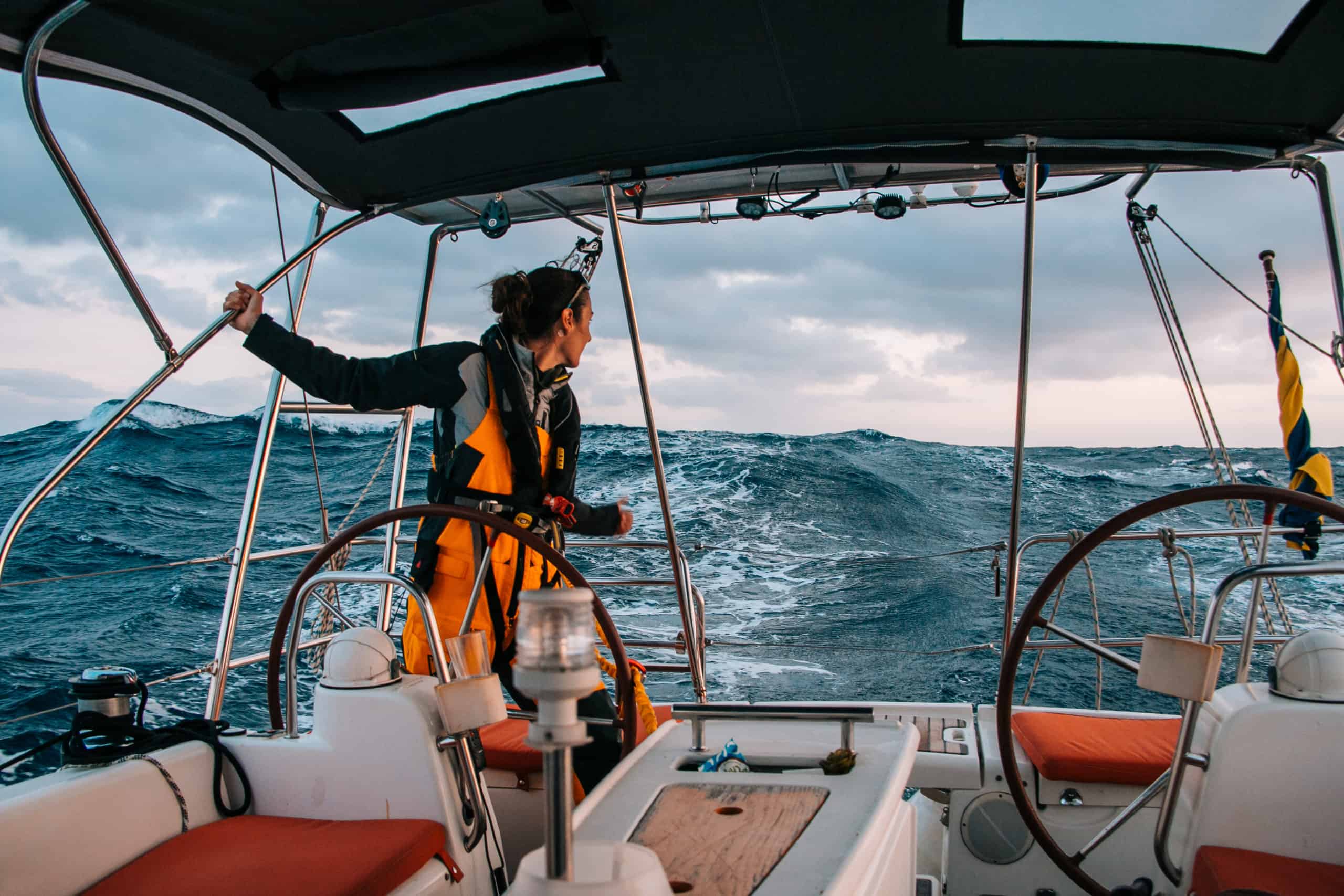
Ryan and Sophie – Sailing Digital Nomads
Con#2: Living on a boat isn't always comfortable.
So at this point, you have probably understood that living on a sailboat is not always the fun life that it sounds to be. While we have made our boat as comfortable as we possibly could, it is still a very small space where everything is difficult to access and headspace is never a granted commodity.
The total livable surface area of our boat is 18 square meters (190 square feet), and a lot less if you count the parts where you can not stand. We have to use all the nooks and crannies to store our belongings and supplies, and it isn’t rare for us to spend 10 minutes digging into a storage locker for a single can of tomatoes.
Privacy is another challenge that comes with living and working from a boat, especially small ones. When one of us has a call or a meeting, the entire boat is transformed into a meeting room where the meeting shall not be disturbed. It can be hard for the other person to get anything done when either Ryan or I have a meeting, and we often need to leave the boat in order not to disturb one another.
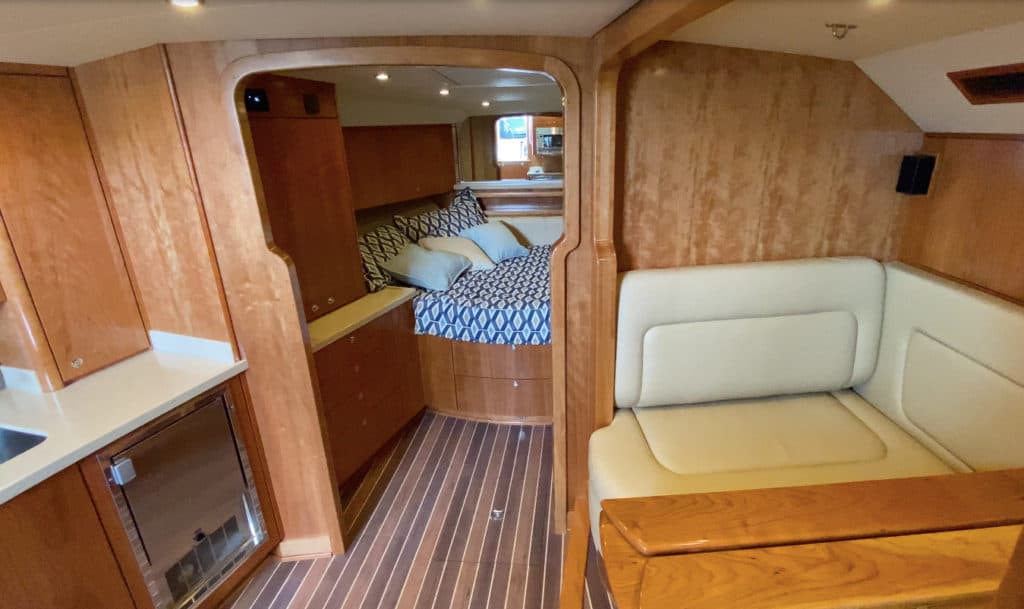
Did I mention seasickness? It can happen on anchor or at a marina if the weather is rough!
Add to that blazing heat and humidity, mosquitoes, limited supplies of water and electricity (goodbye long hot showers), problems with you toilet or maintenance (this happens more than you’d think), very long dinghy rides to get groceries or do the laundry (all of which needs to be carried there and back to the boat) and of course….
Ryan and Sophie – Sailing Digital Nomads
Con#3: Things break all the time (and especially when it is inconvenient)
In the last three years, Ryan and I have gathered countless stories of parts of our boat breaking when we need them the most. Here are a few examples:
We were in the Mediterranean in the winter of 2018, it was 9° celsius outside (48F) and the shower water would not warm up. It was then that we realized the heating element in our water heater had died of a thick calcium deposit. It took us two weeks to replace it, and those weeks were *COLD*.
We arrived in Antigua in February of 2020, where we were going to stay for a short time. We were just about to drop the anchor when we realized that our windlass, the part of the boat that takes our anchor chain up and down, was disintegrating due to corrosion. Finding the right windlass for our boat was impossible to do in Antigua, so we had to manually hoist our 25kg (55lbs) anchor and 100kg of anchor chain to sail to Saint Martin, where we spent $2000 on a new windlass. We stayed in Antigua for 24 hours and saw almost nothing of the island.
It is the summer of 2021, we arrived in Bermuda after 10 very uncomfortable days at sea. It was 4 AM and the night was dark. Negotiating the entry in Bermuda is complicated, as the reef extends several miles off the coast, so we were on the VHF radio with a Bermuda radio operator who asked us a few questions about our boat and its equipment ahead of our entry. The operator asked, “Do you have a VHF radio with GPS, DSC (the ability to send and receive distress signal), and an MMSI number (a number that identifies our boat)?” We just had the time to answer “affirmative”, before we heard a loud “POP” coming from our VHF before it officially died. We had to stay in Bermuda for three weeks to wait for a new VHF to arrive.
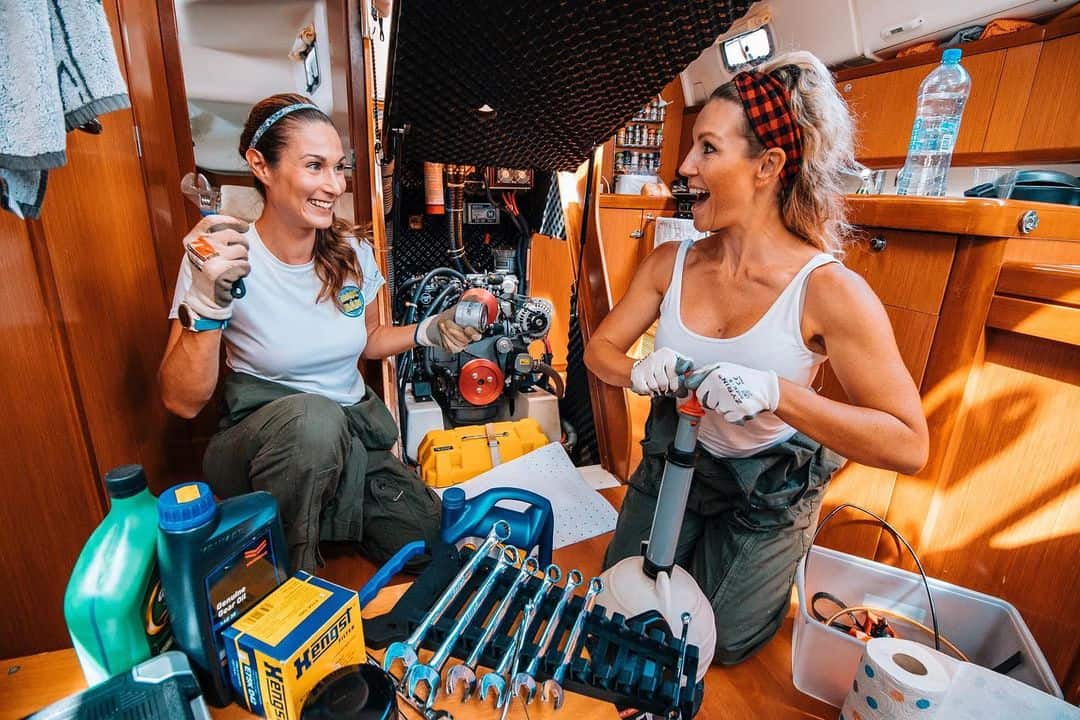
Just recently, we were in the middle of the Atlantic Ocean between Bermuda and the Azores, when our Iridium Go, which is the satellite communications device that enables us to stay in contact with shore, receive weather forecasts and call a doctor in case of a medical emergency, decides that it is not going to work anymore. We had to spend another week at sea trying to figure out how to activate our back-up plan and receive weather forecasts in a different way. Meanwhile on shore, our families, friends and Youtube subscribers were getting worried because our live satellite tracker hadn’t moved in days. Fun times!
All in all, living and traveling the World on a boat takes a lot of patience, a lot of flexibility and the willingness to always learn about your boat and its system. It also requires the ability to be able to adapt your decision making based on new circumstances and above all… a giant dose of self love to deal with the stress and fatigue that it can cause.
But the rewards are well worth the price, and while we have had moments when we considered selling the boat (as every sailor does), we have never looked back on our lifestyle with an ounce of regret and we plan to live on our boat for as long as we can!

